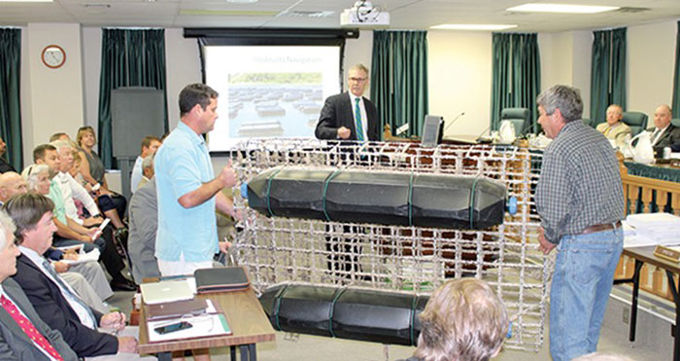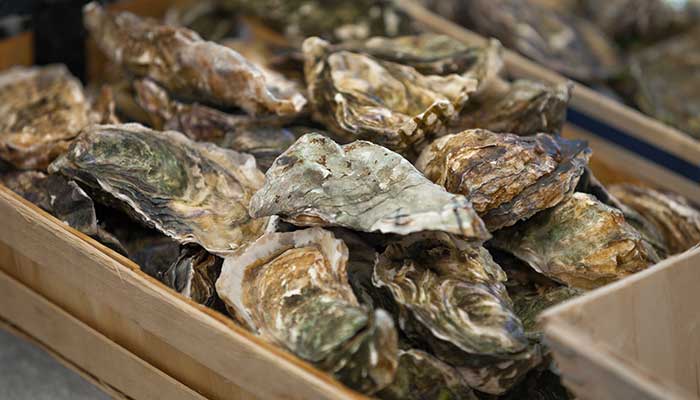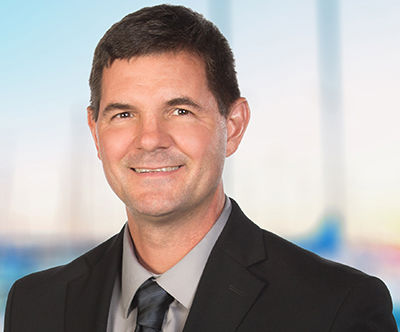
VA Riparian & Waterfront Property Rights at March 2019 VMRC Meeting
“VMRC decisions have direct and immediate consequences affecting the riparian property rights of Virginia's waterfront property owners. The VMRC makes these decisions at monthly meetings which are open to public. We attend the monthly VMRC meetings to represent our clients or as observers, and provide our readers a summary of the important cases.”
The Virginia Marine Resources Commission (VMRC) is the state agency that manages Virginia’s marine resources. The VMRC regulates the fisheries and shellfish industries and issues permits for encroachments over state-owned submerged lands. It also manages the Virginia Wetlands Act, and the Coastal Primary Sand Dune Protection Act. VMRC decisions have direct and immediate consequences affecting the riparian property rights of Virginia's waterfront property owners. The VMRC makes these decisions at monthly meetings which are open to public. We attend the monthly VMRC meeting to represent our clients or as observers, and provide our readers a summary of the important cases.
The March meeting of the Virginia Marine Research Commission was held on March 26, 2019 in the VMRC’s new offices located on Fort Monroe. All nine Commission members were present.
After unanimously passing several non-contested infrastructure applications, the Commission turned its attention to the only contested permit application on the agenda for the day. This was JPA # 19-0201, an infrastructure permit submitted by Susan Wade in which she requested permission to install eight oyster “upwellers” (tanks for growing oysters) and six pumps for the purpose of circulating seawater through the tanks. Three of these pumps would be located underwater, but three of them were to be located on the pier itself. As explained on the website of one of the largest cage oyster farms in Virginia, “[g]rowing oysters is a multi-step process which requires a lot of handling and labor.” One millimeter oysters that have attached to oyster shell are placed in upweller tanks (like those Mrs. Wade proposes to install on the pier) until the oysters reach 5/8 of an inch (or larger), at which point the oysters are transferred to cages (either bottom cages or floating cages), where they grow to market size.

Lena Serditova/Shutterstock.com
The VMRC Staff recommended approval of all the tanks and pumps.
Twelve written protests were submitted to the VMRC; several of the protestors appeared at the hearing and offered testimony in opposition to the project.
Contested infrastructure permits are almost always approved by the VMRC. The proprietary data collected by our Waterfront Property Law Team shows that the Commission approved 100% of the contested infrastructure applications submitted in 2018 and 2019, although some have been “after the fact” approvals accompanied by significant fines.
As background, those of you who follow this Blog may recognize the name Susan Wade. Mrs. Wade was recently widowed when her husband Mr. Kevin Wade, the former owner of Island Seafood passed away in January. Our waterfront law team represented the “Save the Haven” group in opposition to Mr. Wade’s permit application to install 700 floating oyster cages in beautiful and historic Milford Haven located near Gwynn’s Island in Matthews County. While the highly controversial floating oyster cage permit was not directly at issue in Mrs. Wade’s current application to install upwellers and pumps on her pier, it nonetheless provides some context. This floating cage permit was the subject of enormous public outcry and substantial media attention. After an hours-long hearing, the VMRC approved the permit application by a narrow vote. Read the full account of that VMRC meeting here. That decision is currently under appeal in the Circuit Court of Matthews County.
“Contested infrastructure permits are almost always approved by the VMRC. The proprietary data collected by our Waterfront Property Law Team shows that the Commission approved 100% of the contested infrastructure applications submitted in 2018 and 2019, although some have been “after the fact” approvals accompanied by significant fines.”
Following the passing of her husband, Mrs. Wade requested that his floating oyster cage permit be transferred to her newly formed limited liability company as part of his estate. Riparian property rights attorneys Jim Lang and Bryan Peeples, representing the “Save the Haven” group, submitted formal legal correspondence to the VMRC opposing the request, explaining that the floating cage permit was not a lease that can be transferred upon the death of its owner, but a mere license which ceased to exist at Mr. Wade’s passing. The VMRC agreed with our Waterfront law team and denied Mrs. Wade’s request. Thus, if Mrs. Wade wishes to install the array of 700 floating oyster cages, she would be required to submit a new application (which she has done). With the amount of public outcry and the pending appeal of VMRC’s decision to grant the original permit, the outcome of Mrs. Wade’s new floating cage application is far from certain.
As mentioned above, Mrs. Wade’s present application for upwellers and pumps is not directly related to her pending request for a giant array of floating oyster cages, but it may help to explain her neighbors’ sensitivity to any permit application coming from that particular seafood company. JPA # 19-0201 garnered twelve letters of protest from nearby residents of Milford Haven, many of whom were present at the meeting. The protestors were not opposed to the upweller tanks themselves, or even to the submerged pumps. Their only concern was the about noise coming from the three pumps that would be located on the pier.
Mrs. Wade was not present at the meeting, but was represented by her agent Mr. Ben Woodward. Mr. Woodward asserted that Island Seafood desires to be good neighbors. He testified that upon receipt of the protest letters, he designed insulated boxes to go around the pumps in order to reduce the amount of noise produced. He explained that a single pump produces between 65 and 75 decibels (dB) of sound, which he equated to a hairdryer or vacuum cleaner. He also pointed out that many other seafood companies use the same type of pumps and there have been no complaints. He admitted that the pumps would run 24-7 during the oyster growing season in late spring and early summer months, but argued that this would have little noise effect because the pumps would be located on a pier that sits approximately 220 feet in the water, and approximately 700 feet from residences.
The protestors who were present at the meeting seemed to appreciate the steps that Mrs. Wade’s company has taken to mitigate the pump noise, but they were not convinced that the measures would be effective. They pointed out that there is a 100% increase in noise level between 65 and 75 dB, and that there was no information provided about how much noise would be produced by all three pumps operating simultaneously.
After hearing from several different protestors and asking numerous questions, the Associate Commissioners conferred with their legal counsel and determined that they possess the authority to approve the permit application with conditions requiring sound mitigation. While they refused to set a specific decibel limit because VMRC does not possess sound-measuring equipment, they did unanimously approve the permit application subject to certain sound mitigation requirements. These included keeping the pumps in insulated boxes, and extending the length of the pipes which return the water back to the Haven so that the “waterfall’ sound would be reduced as much as possible. Chairman Bowman ended the issue by admonishing Mr. Woodward to “be a good neighbor.”
The only other somewhat controversial issue at the March meeting was a proposed emergency regulation which would make it unlawful to sell European green crabs with the intent to place them into the waterways of the Commonwealth. European green crabs are an invasive species which eat small shellfish. Many fishermen are using them as live bait, which is having a negative impact on the ecosystem. Deputy Commissioner Zydron, who used to sit on the bench as a Virginia General District Court Judge, pointed out that the “with intent to place them into the waters of the Commonwealth” language would pose a significant challenge for enforcement and conviction, as it would require proving an element of specific intent. The consensus was to remove the language about intent, and simply make it unlawful to sell European green crabs for any reason. Commissioner Bowman and several of the Associate Commissioners wanted to make it unlawful to even possess the crabs. However, legal counsel Kelci Block explained that the VMRC’s regulatory authority cannot exceed the scope of the Virginia Code, and the Code does not make possession illegal. It was decided to table this discussion until the next meeting, during which time Ms. Block will conduct legal research to determine if any other legal authority exists in the Code under which the VMRC can make possession of these crabs unlawful.
Audio of the meeting is available at http://mrc.virginia.gov/calendar.shtm.
